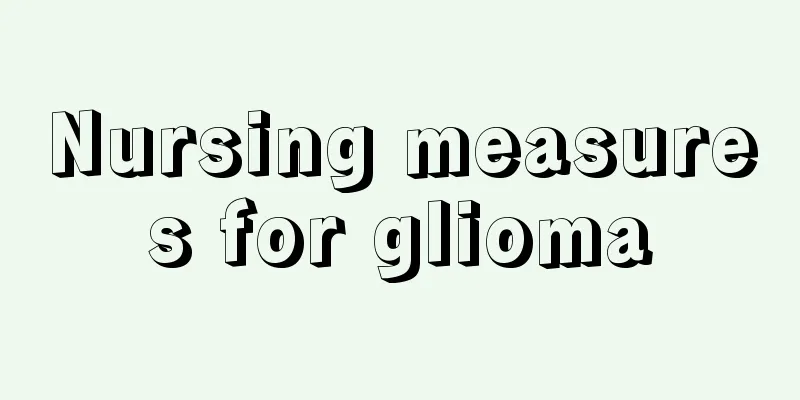Daily care methods for glioma

|
Glioma is a malignant tumor. During the treatment process, surgery is generally performed. However, some people think that the disease will be cured after the operation and do not pay attention to postoperative care, which leads to the recurrence of the disease. It can be seen that the care of glioma is very important. What are the daily care measures for glioma? Let's take a look. 1. Training of self-care ability Patients with limb weakness hope to live independently. Family members guide patients to practice various kneading methods, and then learn to use combs and brushes, wash their faces, take baths, eat food with their hands, etc., so that patients can gain a sense of belonging and emotional satisfaction, as well as the satisfaction of taking care of themselves. 2. Limb function training During the period of hemiplegia and bed rest, family members assist in passive limb function exercises. After recovery, active activities are encouraged, such as standing exercises. Start standing with support, such as leaning against a wall, holding a cane, etc. At the same time, guide sitting and standing exercises and step-climbing exercises to improve lower limb muscle strength. As the condition improves, gradually transition from standing without support to walking. Active exercises are mainly performed on the joints of the affected upper limb, strengthening the activity of the metacarpophalangeal joints and thumb finger exercises to promote smooth recovery of hand function. 3. Psychological care Most patients are suddenly injured in their normal life or work, or suffer from hemiplegia due to illness. The psychological changes of these patients are often manifested as depression, anger, guilt, and regret, which cause personal and family tragedies. Since patients have lost the ability to live independently, they will have many concerns about their personal life, marriage, work, and future. Therefore, family members should care for, comfort, and encourage patients, so that they can correctly treat the disease, future life and work, build confidence in the future, give full play to their subjective initiative, and cooperate with various rehabilitation treatment and nursing work with strong perseverance. 4. Language rehabilitation training First of all, we need to give patients enough self-confidence and patience, and give timely praise and encouragement for every improvement from simple single and double sounds to sentences. We need to spend more time with patients reminiscing about the past and talking about happy things. We need to treat patients like adults coaxing children, with love and respect, so that patients can live happily every day. |
<<: Nursing measures for glioma
>>: What is the postoperative care for glioma
Recommend
What is the reason for numbness in the right brain
Numbness in the right brain is most likely caused...
How to treat acute gout?
There seem to be more and more diseases in societ...
What causes nosebleeds while swimming
Many people like swimming very much, especially t...
Low fever, runny nose, sneezing
Low fever, runny nose and sneezing are usually ca...
How many times of chemotherapy is needed after surgery for early cervical cancer?
Patients with early cervical cancer generally nee...
What are the main hazards of melanoma?
What are the main hazards of melanoma? Many peopl...
How long does meat last in the refrigerator?
As people's living standards continue to impr...
Playing with mobile phones is a disease, prevention and treatment are effective quickly
Mobile phones are essential tools in life and are...
What nutritional supplements should be given to patients with fractures
It is a rather difficult matter to decide what gi...
What to do if you lose weight for no apparent reason
The inexplicable weight loss is related to our re...
Does the electric heater have radiation?
Electric heaters are household appliances used by...
What symptoms can cold feet cause
Keeping your feet warm is very important at all t...
What are the functions of dried pistachios?
Pistachio dried fruit is very common in our daily...
What should I do if the ceramic knife is not sharp?
Knives are essential cooking tools in life. When ...
How long can you live with cervical cancer in the middle and late stages?
Cervical cancer is the most common malignant tumo...









